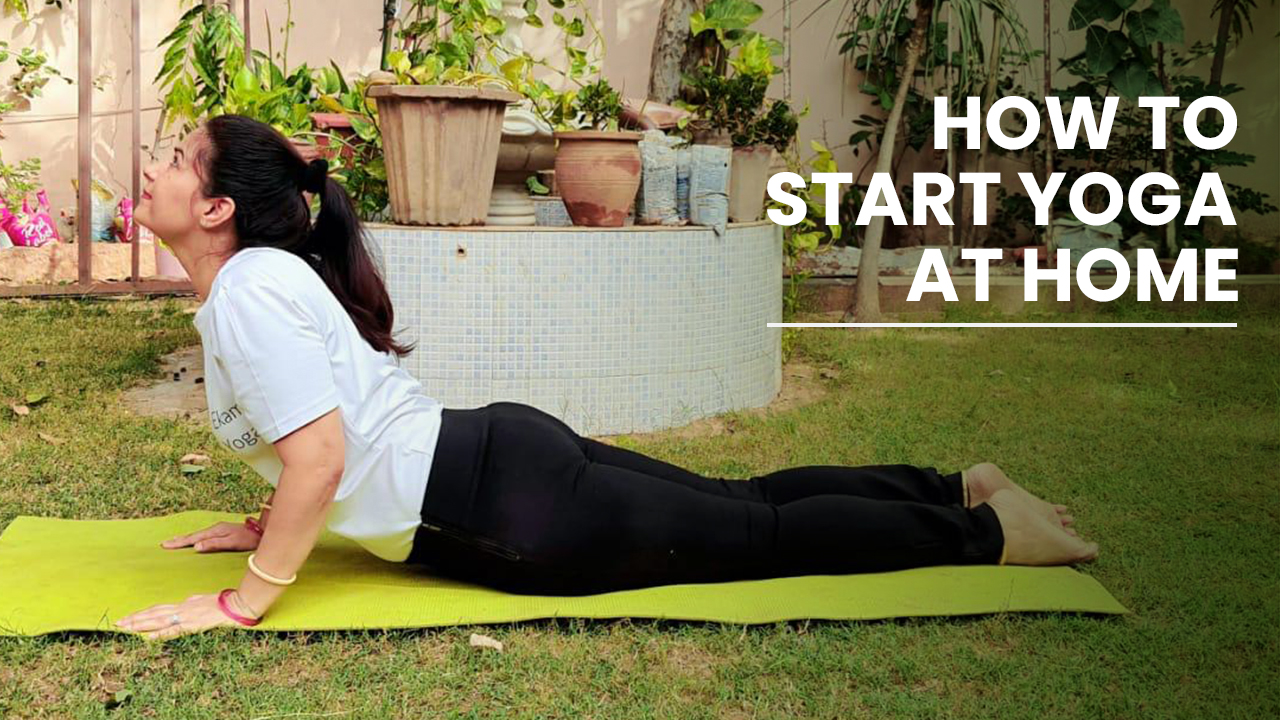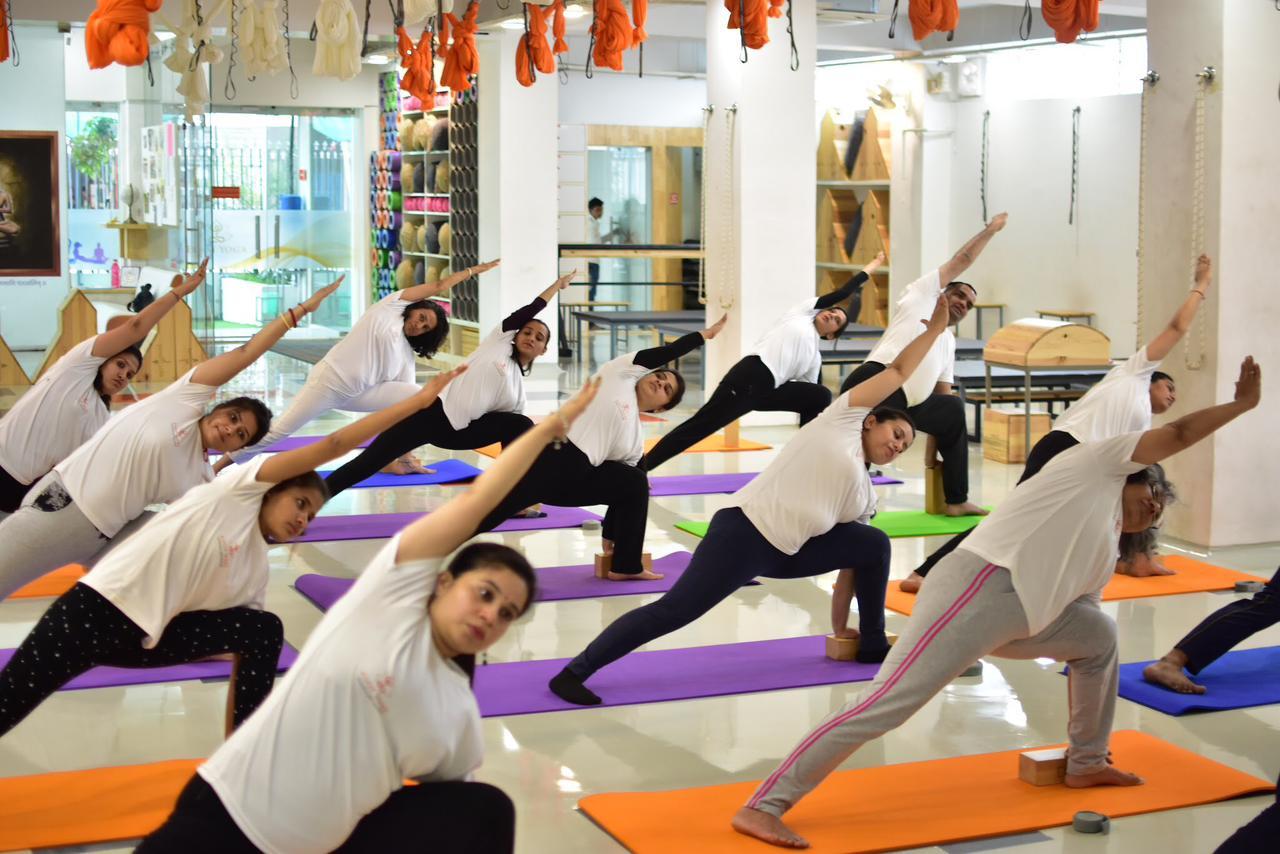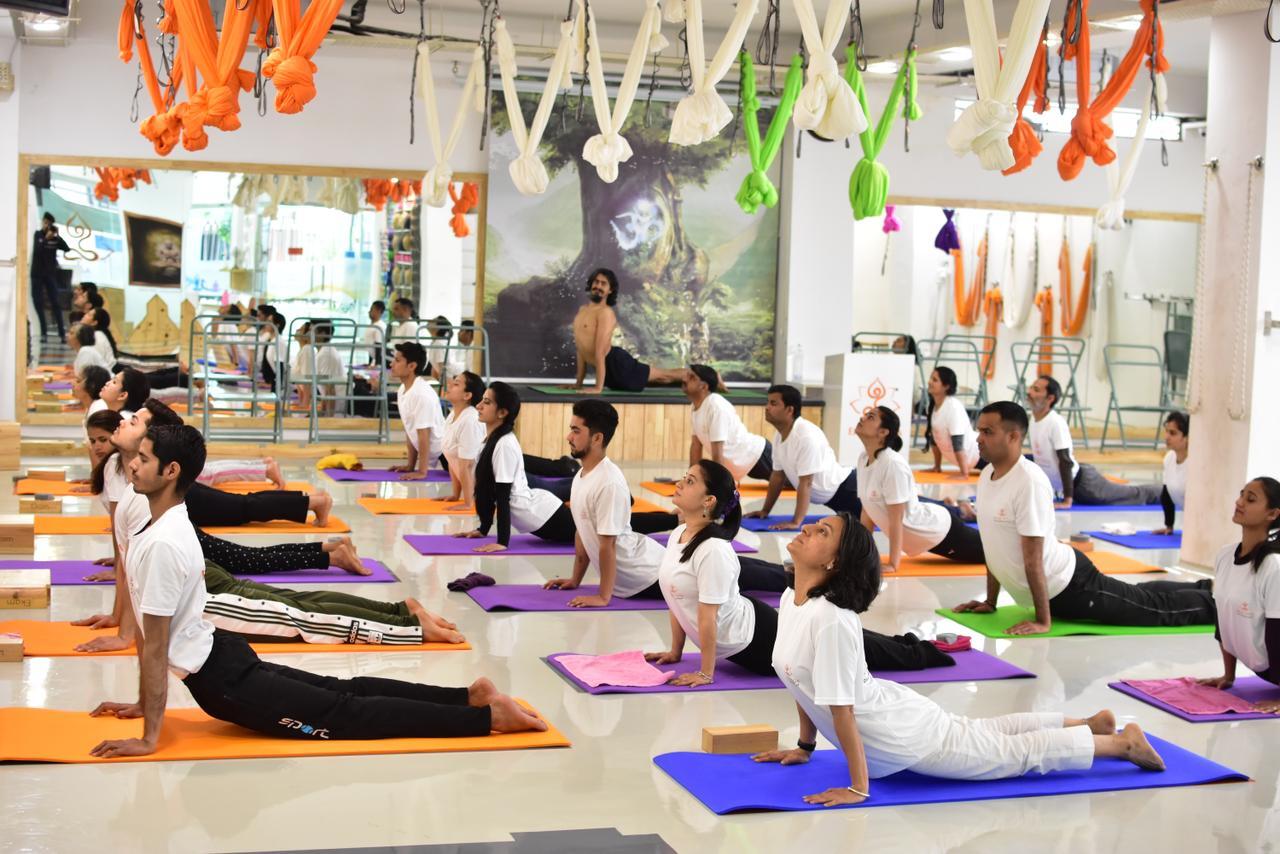Starting a home yoga practice can be a great way to deepen your practice and make it more accessible. By setting up a designated space, creating a schedule, finding a teacher or online resource, tailoring your practice to your needs, and using music or other tools, you can establish a successful and fulfilling home practice.
We are sharing in this article, comprehensive guides on how to start yoga at home. With these tips and tricks, you'll be well on your way to a thriving home yoga practice.
1. Set Up Your Space
The first step in starting yoga at home is to set up your space. Find a quiet and comfortable area in your home that is free from distractions. You can practice yoga in any room of your house, but it's important to have enough space to move around freely. You can use a yoga mat, but it's not necessary. You can also use a towel or blanket if you don't have a yoga mat. Make sure that the area you choose is clean and free from any sharp or dangerous objects.
2. Choose Your Style
There are many different styles of yoga, so it's important to choose the one that is right for you. Some popular styles include Hatha, Vinyasa, Ashtanga, Iyengar, and Kundalini. Hatha yoga is great for beginners, as it is a gentle form of yoga that focuses on breathing and basic poses. Vinyasa yoga is more dynamic and is great for those who want a more challenging workout. Ashtanga yoga is a more structured form of yoga that follows a specific sequence of poses. Iyengar yoga is great for those who want to focus on alignment, and Kundalini yoga focuses on breathing and meditation.
3. Find a Teacher or Online Resource
If you're new to yoga, it's a good idea to find a teacher or online resource to guide you. A teacher can help you with alignment and can offer modifications if you have any injuries or limitations. Online resources like YouTube or online yoga classes can also be a great way to start practicing yoga at home. Look for teachers or resources that are reputable and have good reviews.
4. Create a Schedule
Just like attending a studio class, it's essential to create a schedule for your home practice. Decide on a time that works for you, and stick to it as much as possible. This will help you establish a routine and make it easier to commit to your practice. It's also a good idea to set a realistic goal for how often you want to practice each week. Even if it's just a few minutes a day, committing to a regular practice will help you see progress and maintain motivation.
4. Start with Basic Poses
Once you have your space set up and you've chosen your style of yoga, it's time to start practicing. It's important to start with basic poses and to focus on proper alignment. Some basic poses that are great for beginners include:
- Mountain Pose: Stand tall with your feet hip-width apart and your arms at your sides. Inhale and reach your arms up overhead, lengthening your spine. Exhale and lower your arms back down to your sides.
- Downward-Facing Dog: Start on your hands and knees with your wrists under your shoulders and your knees under your hips. Exhale and lift your hips up and back, straightening your arms and legs. Press your heels towards the floor and hold for several breaths.
- Child's Pose: Start on your hands and knees with your big toes touching. Lower your hips back towards your heels and stretch your arms out in front of you. Rest your forehead on the floor and hold for several breaths.
- Warrior II: Stand with your feet wide apart and turn your right foot out to the side. Inhale and reach your arms out to the sides, parallel to the floor. Exhale and bend your right knee, keeping it directly over your ankle. Look over your right hand and hold for several breaths. Repeat on the other side.

5. Focus on Breath
Yoga is not just about the poses, it's also about the breath. Focusing on your breath can help you relax and can help you get deeper into the poses. As you practice, try to inhale and exhale through your nose and take slow, deep breaths.
6. Use Music or Other Tools
Another benefit of a home yoga practice is that you can incorporate music or other tools that help you feel motivated and inspired. Choose music that matches the mood and pace of your practice, or consider using props like blocks, straps, or bolsters to deepen your poses. These tools can help you stay engaged and motivated, making it easier to commit to your practice.
The article also suggests finding a teacher or online resource for guidance and inspiration, tailoring your practice to your physical and mental needs, and incorporating music Ekam Yoga Academy or other tools to enhance your practice.
Starting a home yoga practice can be a rewarding and transformative experience. By creating a dedicated space, setting a schedule, and staying motivated, you can establish a fulfilling practice that supports your physical, mental, and emotional well-being.
Top Tips To Avoid Injuries While Learning Yoga
FAQ’s
Q: How do I stay motivated to practice yoga at home?
Ans: Set a regular schedule for your practice and stick to it as much as possible. You can also use online resources like guided videos or apps to keep your practice fresh and engaging. Find a friend or family member to practice with or join an online community to stay accountable and inspired.
Q: Do I need a teacher to practice yoga at home?
Ans: While it's not necessary to have a teacher, it can be helpful to seek guidance from a qualified instructor, either in-person or through online resources. A teacher can help you refine your alignment, suggest modifications, and provide inspiration for your practice.
Q: What are the benefits of a home yoga practice?
Ans: Practicing yoga at home allows you to set your own schedule, tailor your practice to your specific needs, and save money on studio memberships. It also gives you the freedom to practice at your own pace and explore different styles of yoga.





0 Comments
Write a comment